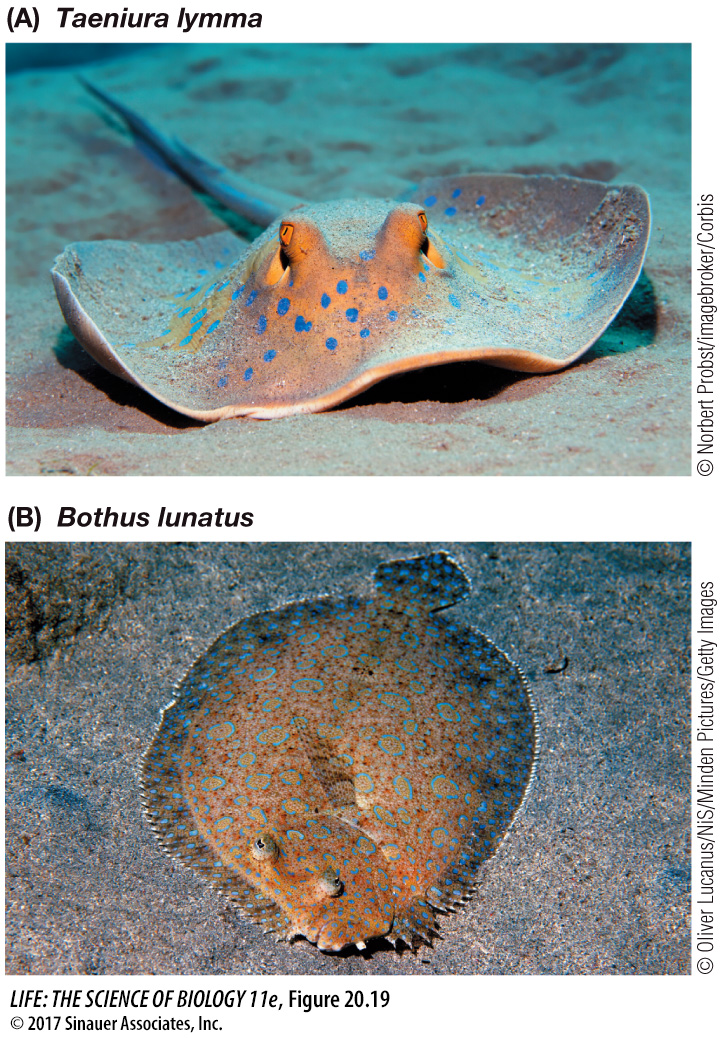Developmental processes constrain evolution
As Chapter 19 explained, developmental constraints on evolution are paramount because all evolutionary innovations are modifications of previously existing structures. Human engineers seeking to power an airplane can start “from scratch” to design a completely new type of engine (powered by jet propulsion) to replace the previous type (powered by propellers). Evolutionary changes, however, cannot happen in this way. Current phenotypes of organisms are constrained by historical conditions and past selective pressures.
A striking example of such developmental constraints is provided by the evolution of fish that spend most of their time on the sea bottom, where a ventrally flattened body is advantageous. One such lineage, the bottom-dwelling skates and rays, shares a common ancestor with sharks, whose bodies are already somewhat ventrally flattened and whose skeletal frame is made of flexible cartilage. Skates and rays evolved a body type that further flattened their bellies, allowing them to swim along the ocean floor (Figure 20.19A).

Figure 20.19 Two Solutions to a Single Problem (A) This stingray, whose ancestors were dorsoventrally flattened, lies on its belly. Stingrays’ bodies are symmetrical around the dorsal backbone. (B) The flounder, whose ancestors were laterally flattened, lies on its side. (The backbone of this individual is at the left.) Flounders’ eyes migrate during development so that both are on the same side of the body.
By contrast, plaice, sole, and flounder are bottom-dwelling descendants of deep-bellied, laterally flattened ancestors with bony skeletons. The only way these fish can lie flat is to flop over on their sides. Their ability to swim is thus curtailed, but their bodies can lie still and are well camouflaged. During development, one eye of these flatfishes moves so that both eyes are positioned on the same side of the body (Figure 20.19B). Such shifts in eye position have evolved several times, and shifts have happened in both directions (that is, both left- and right-eyed flatfish have evolved independently). Small shifts in the position of one eye probably helped ancestral flatfish see better, resulting in the body forms found today. This path to producing a flattened body may not be optimal, but the fishes’ developmental capabilities constrain the pathways that evolution can take.
